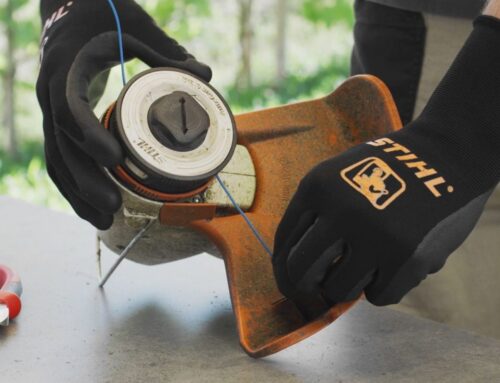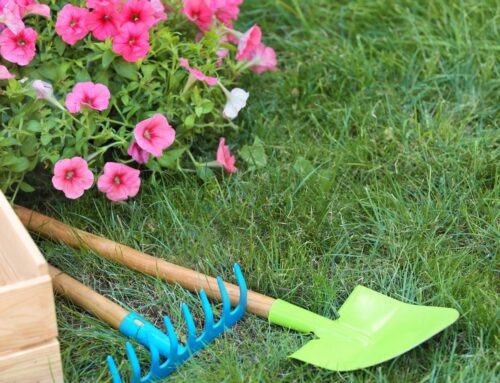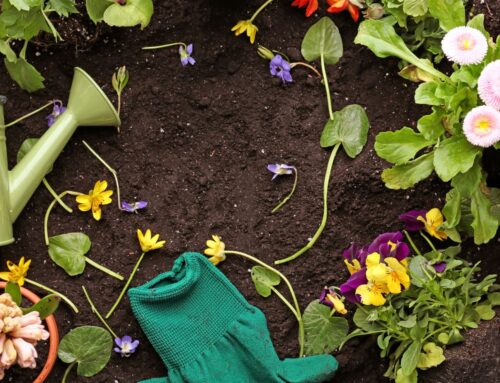
When Should You Water Your Lawn for the Best Lawncare?
Good lawn care is essential if you want to enjoy a healthy patch of grass and create an attractive garden. With this in mind, let’s take a look at some of the simple things you can do to take proper care of your lawn.
Here, we consider the best time of day to water your lawn, the frequency which you should do it, and the signs your lawn gives you when it needs watering. Then, we’ll examine the best ways to water a lawn, the dangers of overwatering, and a few other tasks you can do to help cultivate a healthy lawn.
When Is the Best Time of Day to Water a Lawn?
 If you’re wondering when to water your lawn, the answer is early in the morning, ideally before 10am. At this time of day, the sun is less intense and the temperature cooler, giving the water the best possible chance to penetrate the soil.
If you’re wondering when to water your lawn, the answer is early in the morning, ideally before 10am. At this time of day, the sun is less intense and the temperature cooler, giving the water the best possible chance to penetrate the soil.
Should you water your lawn later in the day, when the sun is stronger and temperature higher, there is a danger that the moisture will evaporate before it can reach the grass’s roots.
And don’t fall into the trap of thinking it’s okay to water your lawn late in the evening, either. Although the temperature will be cool enough to prevent the water from evaporating, the length of time before the sun reappears means your lawn will stay wetter for longer, increasing the risk of fungal diseases developing.
If, for any reason, you are unable to water your lawn early in the morning, the next best time to do so is between 4 and 6pm. At this time of day, the temperature should be slightly cooler, but the grass will still have enough time to dry before nightfall.
How Frequently Should I Water My Lawn?
The first thing to note here is that different types of lawn require different amounts of water. If your turf is newly laid, it will need more frequent watering than an established lawn, which will have much deeper roots and be far more resilient to drought.
In fact, as long as you’re not overly concerned about the aesthetic appeal of your lawn, it’s fair to say that established lawns rarely need watering, as they’re perfectly capable of rejuvenating themselves, even after long dry spells.

New lawns need watering more frequently than established ones.
That said, if you have a new lawn, or like to keep your older one looking attractive, you’ll need to be more active.
Depending on the weather, this could involve watering your lawn in spring, when it’s coming back to life; in summer, when temperature, dry spells and footfall are at their highest; and in autumn, which is the ideal time to help rejuvenate your lawn and ensure it’s in the best possible condition for the following year.
Naturally, summer is when you’ll be at your busiest, but don’t fall into the trap of lightly watering your lawn, every day, because this is more likely to harm than help it.
The best way to keep your lawn healthy is to water the grass thoroughly but infrequently, as this encourages a deeper, stronger root system, once again making your lawn more tolerant to droughts.
Generally speaking, for healthy growth a lawn needs 1 – 1.5 inches of water, including rainfall, per week. So, in terms of time, this equates to about 30 minutes of watering, a couple of times per week.
However, there’s no need to become too regimented about timings because, ultimately, your lawn will tell you when it needs watering, so here are some signs to look out for.
Signs Your Lawn Needs Watering
 As most of us lead busy lives, with competing demands on our time, we will inevitably sometimes fall behind with our lawncare. This is unlikely to cause any real damage to the lawn’s long-term health, but it’s important to be able to recognise the signs that your lawn needs water.
As most of us lead busy lives, with competing demands on our time, we will inevitably sometimes fall behind with our lawncare. This is unlikely to cause any real damage to the lawn’s long-term health, but it’s important to be able to recognise the signs that your lawn needs water.
The most obvious visible signs are the development of dry, brown patches on the lawn, the general greying or yellowing of the grass, and slower growth. On closer inspection, you will also be able to see the grass blades wilting.
There are simple tests you can carry out to determine moisture levels too. Firstly, walk across the lawn and then observe where you’ve trodden. If the grass you’ve stepped on has bounced back to its original position, it’s a sign your lawn is well hydrated. However, if it remains flat, and you can see your footprints, then it’s likely to need some water.
You can also try the screwdriver test on your lawn, where you push the tool into the ground to determine its moisture levels. If the screwdriver easily penetrates the earth, all is well. But if it struggles, then it’s a clear sign that the soil is dry and dehydrated.
How to Water Grass
 When watering your lawn, the idea is to mimic slow, steady rainfall, so avoid using a hose that isn’t fitted with a sprinkler.
When watering your lawn, the idea is to mimic slow, steady rainfall, so avoid using a hose that isn’t fitted with a sprinkler.
If you have a sprinkler system with automatic timer, be sure to use rain and/ or soil moisture sensors to prevent overwatering.
Also, where possible, try to use captured rainwater from a water butt, as this will reduce pressure on the water system, particularly during prolonged dry spells.
Dangers of Overwatering
Any gardener will tell you that when caring for your lawn, it is always better to underwater, rather than overwater.
underwater, rather than overwater.
One problem of overwatering, particularly on newer lawns, is that it can lead to shallow rooting, which leaves the grass thinner and far more susceptible to problems during dry spells.
Overwatering can also result in root rot, leaving the grass open to bacterial and fungal infections, sometimes with fatal consequences.
Other potential problems of overwatering include root suffocation, due to lack of oxygen; the washing away of nutrients from the soil, causing stunted growth; increased water bills; and negative environmental impacts.
As a final thought, if you’re unsure whether or not your lawn actually needs watering, always bear in mind that domestic lawns usually comprise of highly resilient types of grass. Even during extended periods of drought, when the lawn becomes dry and discoloured, it will only sit dormant until the rain returns, when it should gradually begin to regenerate.
Other Ways to Cultivate a Healthy Lawn

With its intelligent design and premium features, the HONDA HRN 536 VK Petrol Lawnmower will take good care of your lawn.
When mowing, sometimes let the grass cuttings fall back onto your lawn as this is good for hydration. Because the cuttings act as mulch, they can help your lawn retain its moisture.
And during dry conditions, it’s advisable to mow your lawn less frequently and raise the cutting height on your lawnmower, so as to encourage deeper rooting of the grass.
In terms of other garden machinery, aerators, scarifiers and sprayers also have an important role to play in creating a healthy lawn.
By piercing and lifting the turf, the first two machines help provide the grass’s roots with the air, water and nutrients needed for healthy growth. They also remove thatch and organic debris from the surface of a lawn, once again improving drainage, increasing air plus nutrient intake, and reducing pests.
And sprayers, of course, offer the ideal way to apply liquid treatments to your lawn, enhancing the health and beauty of the grass, so your garden will stand out from the crowd.
Care for Your Lawn with Garden Machinery Direct
Here, at Garden Machinery Direct, we fully appreciate how much our customers value their lawns, which is why we stock such a great range of lawncare products, amongst our garden machinery for sale.
So, if you’re in the market for a new lawnmower, aerator, scarifier or sprayer to help care for your lawn, be sure to take a look at the relevant categories on our website.
And if you need any additional information about our products, or have further questions on lawncare, please don’t hesitate to contact one of our friendly, UK-based experts, who will be delighted to help you, in any way they can.




